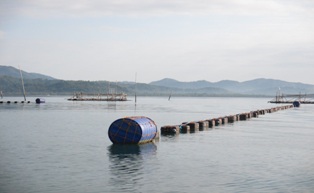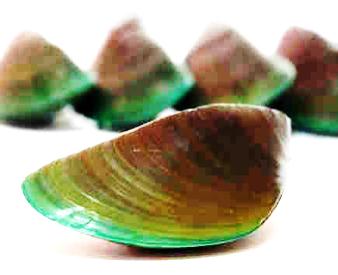 Growing mussels during the rainy season can be costly. In open areas or unprotected sites, the presence of heavy rains, strong winds, and big waves may damage the stock and culture materials of mussels.
Growing mussels during the rainy season can be costly. In open areas or unprotected sites, the presence of heavy rains, strong winds, and big waves may damage the stock and culture materials of mussels.
Pinoy longline, a modified and cost-effective version of the longline culture system used by other countries for producing high-quality mussel, proved to be effective in adapting to the effects of extreme weather conditions on mussel culture.
The Pinoy longline method is suitable for deeper waters and may be used to replace the traditional stake method, which causes heavy sedimentation in coastal areas. It is resilient and can withstand strong winds. Unlike the stake method, it can be easily pulled to a sheltered place during extreme weather conditions, thus avoiding damage to the mussels and the structure. When there is downpour and the salinity level on the upper layer of water decreases, the structure can simply be submerged to a level where there is optimal salinity, hence lessening the impact of heavy rainfall.
The culture system structure is composed of a 20-m main line made of 20-mm polypropylene rope. Attached in the main line are black plastic containers (40 cm x 35 cm x 19 cm). These are recycled materials used for transporting oil and soy sauce and are used as floaters. Two plastic containers (91 cm x 37 cm) covered with polyethylene rope are used on both ends of the line. To maintain the longline, anchors (approximately 153 cm x 127 cm x 102 cm) are placed on both sides. For stocking, mussel socks (or “mussocks”) made of two meter long and 10-mm thick polyethylene rope with cylindrical cement weighing 1 kg are used at the bottom. Mussel spats (2-3 cm) are placed inside the mussocks at 200 pieces/m of sock. Mussocks are tied to the longline at 50 cm interval.
 The longline culture system lessens sedimentation in the culture areas unlike in the use of bamboo poles. Producing high quality mussels, the longline culture system is expected to modernize the mussel industry.
The longline culture system lessens sedimentation in the culture areas unlike in the use of bamboo poles. Producing high quality mussels, the longline culture system is expected to modernize the mussel industry.
DOST-PCAARRD will showcase Pinoy longline along with its leading R&D initiatives in the agriculture, aquatic, and natural resources (AANR) sectors during the National Science and Technology Week (NSTW) on July 25-29 at the Council’s complex. This year’s NSTW adopts the theme, Juan Science, One Nation.
This year, regional exhibits and exhibits of each of the DOST agencies will simultaneously be held in the mentioned date in their respective headquarters.
The Council will also celebrate its fifth anniversary on July 28, 2016. This will highlight the National Symposium on Agriculture and Aquatic Resources Research and Development (NSAARRD) in the morning and awarding of papers in the afternoon. The NSAARRD showcases the most outstanding contributions of individuals and institutions in improving the state of the AANR sectors through research and development.
